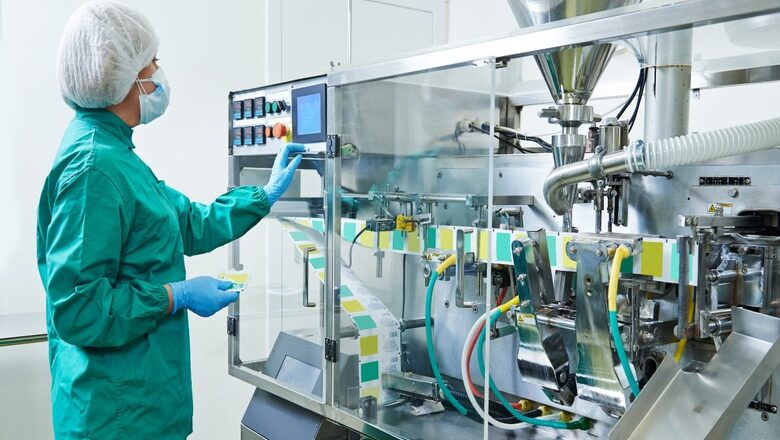
views
The Covid-19 pandemic marked the finest hour for India’s pharmaceutical industry, which worked round-the-clock for an unprecedented production of drugs and vaccines, ensuring their supply across the globe which in turn helped India burnish its reputation as the ‘pharmacy of the world’. India achieved this feat mainly because the pharmaceutical industry and the government worked in tandem to turn the tide against the pandemic. While the industry worked ceaselessly in line with government instructions to boost drug supply to fight Covid-19, the government’s approach meant that India could supply necessary medicines and vaccines to more than 150 countries.
The massive drug and vaccine production during the pandemic also underlined the capability of the Indian pharma industry as there were no complaints about the quality of medicines. In any case, the government has a zero-tolerance policy for sub-par quality drugs and takes stringent actions against the companies involved in such malpractices. From being an import-dependent sector to a self-reliant powerhouse, with a leading global exporter of medicines, have evolved the pharmaceutical sector. As India celebrates its 76th year of independence, we strive to achieve new milestones, and more achievements in the years to come.
Eliminating hurdles
The pandemic, which badly hit global supply chains, also drives home the point of the drawback of overdependence on China for raw materials for manufacturing medicines. To overcome that hurdle, the government quickly ushered in the production-linked incentive (PLI) schemes to produce domestic manufacturing of critical key starting materials (KSMs)/drug intermediates (DI) and active pharmaceutical ingredients (APIs) to boost domestic manufacturing of bulk drugs and reduce import dependence.
The government is also developing three mega Bulk Drugs Parks in partnership with states to reduce the manufacturing cost of bulk drugs in the country and dependency on other countries and create a robust ecosystem for pharmaceutical manufacturing. The scheme will also help in providing a continuous supply of drugs and contribute to the delivery of affordable healthcare to the citizens. The scheme for the promotion of bulk drugs has been notified to develop common infrastructure facilities (CIF) for bulk drug production units to reduce manufacturing costs. This will also help in reducing the impact on the environment through innovative waste management systems installed in the parks. The government provides financial assistance ranging from 70 per cent to 90 per cent for the CIFs in three bulk drug parks selected under the scheme. The PLI schemes have also encouraged manufacturers to produce drugs in India, with the aim of supplying them to the global market.
The government’s scheme Strengthening of Pharmaceutical Industry (SPI) provides for credit-linked capital and interest subsidy for the technology upgradation of MSME units in the pharma sector. It also provides support of up to Rs 20 crore each for common facilities including research centres, testing labs, and effluent treatment plants (ETPs) in pharma clusters.
Boosting Innovation and R&D
The government recognises the vital role of the pharma sector in realising India’s vision of Atmanirbhar Bharat. The pharma industry is now ready to expand its innovation, research, and development capabilities to offer cutting-edge products at competitive, affordable prices. India is marching ahead in the field of research and innovation with the government now opening its research facilities to all, including the private sector. The government has also established six National Institutes of Pharmaceutical Education and Research and designated them as ‘Institutes of National Importance’ to promote research and development in the pharmaceutical sector. Clinical trials which are vital for the growth of the pharma sector have also got a boost. The launch of the New Drugs and Clinical Trial Rules in 2019 has further contributed to the growth of the clinical trial sector, with many pharma majors choosing India as a site for global clinical trials.
Inspired by the Central government’s policies to boost the pharma industry, the Uttar Pradesh government has also announced that its new policy aims to improve the state’s pharmaceutical and medical device industry by encouraging local production, promoting research and development, and improving the availability of affordable medicines to citizens.
Skilling
India is already a global major in generic drugs. But now, more pharmaceutical companies must venture into biosimilars, complex generics, novel biologics, precision medicine, and preventive medication, and address unmet patient needs to expand the market. The government and the industry are aware that as the pharma sector’s product portfolio shifts towards more complex products, the demand for operations and highly skilled personnel for the manufacture of these products will also increase. Expanding and upskilling the talent pool to handle complex technologies will become crucial.
To address these issues, the Life Sciences Sector Skill Development Council (LSSSDC) and the Pharmacy Council of India (PCI) in collaboration with the industry have developed skilling modules for the B.Pharm curriculum. The LSSSDC aims to upskill around 7500 workers in small and medium enterprises to help them perform their roles more efficiently and effectively.
Steady growth
Overall, the pharma market grew at 9.3 per cent in fiscal 2023. The Indian pharmaceutical industry includes a network of 3,000 drug companies and 10,500 manufacturing units. It is projected to reach a value of $130 billion by 2030. The government’s enabling policies have meant that India’s pharma industry continues to play a significant role in enhancing global accessibility by providing approximately 60 per cent of the global vaccine supply and 20-22 per cent of generic exports. The government is also continuously working to help the industry expand its global footprints with the most recent examples being the trade deals with Australia and the UAE. Both these trade agreements give India’s pharma companies better access to the markets in these countries.
The government’s commitment to the growth of the pharma industry is also evident in Vision Pharma 2047 which seeks to usher in an enabling policy framework for the sector to unleash its huge potential for the next two decades and half. India’s pharma industry has a formidable capacity and Vision Pharma 2047 seeks to leverage that to help the country become a global leader in manufacturing affordable, innovative, and quality pharmaceuticals and medical devices, and a leader in innovation and research. The industry can benefit from the availability of trained technical manpower, growing infrastructure, and a greater government-industry-academia collaboration to blaze a new trail under Pharma Vision 2047.
Way Forward
The growth of the sector has been nothing short of tremendous and significant in numerous ways. The sector has made substantial strides, which enhanced its reputation at the global level. The Indian pharmaceutical sector continues to boom, supported by its innovative driven approach, growth strategies and commitment to providing accessible and affordable healthcare solutions. With this momentum, the objective lies in delivering advanced solutions and with the support of public and private partnerships, India has all the capabilities to reach $120-$130 billion by 2030.
The author is Member of Parliament, Lok Sabha. Views expressed in the above piece are personal and solely that of the author. They do not necessarily reflect News18’s views.



















Comments
0 comment